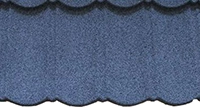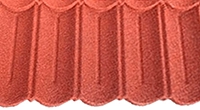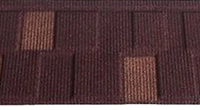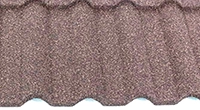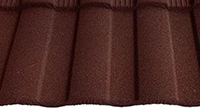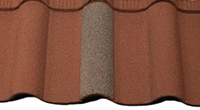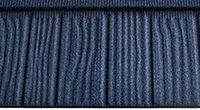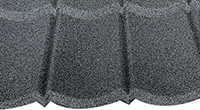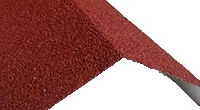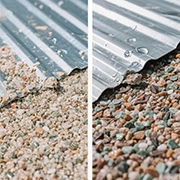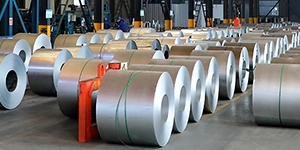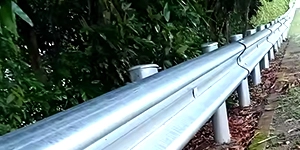What is the quality grade of the Stone Coated Metal Roofing provided by FUODE?
Core parameters of stone coated metal roofing tiles: This article introduces the grading standards for three core parameters - colored sand, adhesive, and aluminum-zinc-coated substrate, and uses a table to compare the key indicators of the three grades.
Grade A stone-coated metal roofing tiles (top standard): Detailed description of the characteristics of Grade A products in terms of raw materials, technical standards and costs, including technical parameters and applicable scenarios.
Grade B stone-coated metal roofing tiles (medium standard): Analyze the raw material composition, technical indicators and cost-effectiveness of Grade B products, and list typical application scenarios.
Grade C stone-coated metal roofing tiles (quality standard): Describes the basic requirements, quality limitations and cost advantages of Grade C products, and points out the usage risks.
Cost comparison and application suggestions: Use a table to compare the overall cost differences among the three levels, and provide selection recommendations.
1.Core parameters of stone-coated metal roofing tiles
The quality grade of colored stone metal roofing tiles is mainly determined by three core parameters: the quality of colored sand, the performance of the adhesive, and the zinc layer weight of the aluminum-zinc-coated substrate. These parameters directly affect the durability, safety and environmental friendliness of the product, and are also the key indicators for domestic and international standard certifications. According to China's building materials industry standard JC/T 2470-2018 "Colored Stone Metal Roofing Tiles" and relevant regulations of international standards ISO and ASTM, combined with production processes and cost differences, this report classifies stone-coated metal roofing tiles into three grades: A, B, and C, to provide a reference for selection.
Color sand quality: As a surface protective material, the color sand must possess UV resistance, weather resistance and color stability. High-quality color sand is produced through high-temperature sintering technology, while low-end products use dyed sand, which is prone to fading.
Adhesive performance: The adhesive determines the bonding strength between the color sand and the substrate. High-quality acrylic resin adhesive can withstand extreme temperatures (-40°C to 200°C), while inferior adhesives are likely to cause sand loss and cracking.
Aluminum-coated zinc substrate zinc layer weight: The core indicator of the substrate's anti-corrosion performance, it directly affects the product's service life. Grade A products require a zinc layer weight of 100g/㎡ or more, while Grade C products only require 40g/㎡.
The following table summarizes the core parameter requirements for three grades of stone-coated metal roofing tiles:
Parameters | Grade A | Grade B | Grade C |
Zinc Coat | ≥100g/㎡ | 40-100g/㎡ | ≤40g/㎡ |
Colored Sand Craft | High-temperature sintered ceramic colored sand | Sintered and dyed mixed colored sand | Common colored sandstone |
Colored Sand Craft | Pure acrylic resin | Modified acrylic resin | Phenylpropyl emulsion |
Low-temperature resistance | ≤-40℃ No change | ≤-30℃ No change | ≤-20℃ No change |
Salt spray resistance | ≥1000h(ISO 9227) | ≥500h | ≥240h |
Life expectancy | ≥50Years | Around 30 Years | 10~15Years |
2. Grade A stone-coated metal roofing tiles (top standard)
2.1 Raw Materials and Process Characteristics
Raw materials and process characteristics
Aluminum-coated zinc substrate: Made of fingerprint-resistant aluminum-coated zinc steel sheet, with zinc content ≥ 100g/㎡ (standard for top-grade products), the ratio of aluminum-zinc alloy reaching the optimal combination of 55% aluminum - 43.4% zinc - 1.6% silicon, and certified by ISO 14788 for corrosion resistance. This substrate has outstanding anti-corrosion performance, able to withstand 1000 hours of salt spray test without rusting, and the warranty period can reach 50 years.
Color sand quality: Made from high-temperature sintered ceramic color sand (such as French Berre stone), it is produced through a firing process at temperatures above 800°C. It has permanent color stability (ΔE ≤ 3, in accordance with ASTM G154-16). This color sand can effectively absorb rain noise (noise reduction ≥ 30 dB), and does not contain heavy metal pollutants. It complies with the RoHS directive (lead ≤ 90 ppm).
Adhesive: Uses high-viscosity pure acrylic resin, which has passed weather resistance certification (in accordance with JG/T 25 standards). It can withstand extreme temperatures ranging from -40°C to 200°C, Taber abrasion loss ≤ 50mg, ensuring no sand shedding or cracking in extremely cold regions. This adhesive is environmentally friendly and non-toxic, with VOC release ≤ 50g/L (in accordance with GB 18582-2020).
2.2 Technical Standards and Certifications
Grade A products strictly adhere to the highest standards both domestically and internationally:
- Comply with the requirements of Grade I products in JC/T 2470-2018
- Pass ISO 9227:2017 salt spray test (≥9 grade)
- Meet the ASTM G154-16 ultraviolet aging standard (no powdering after 1000 hours)
- The combustion performance reaches Grade A non-combustible as per GB 8624-2012
2.3 Application and Maintenance Costs
Applicable scenarios: High-end villas, landmark buildings, corrosive climate zones (such as coastal areas, high-ultraviolet regions)
Life cycle cost: Annual cost is less than 0.5 US dollars per square meter, significantly lower than that of frequently replaced low-end products
3. Grade B stone-coated metal roof tiles (medium standard)
3.1 Raw Materials and Process Characteristics
Aluminum-coated zinc substrate: Zinc layer content 40-100g/㎡ (first-class standard), meets the basic requirements of JC/T 2470-2018, but the zinc layer uniformity is slightly lower than grade A (deviation ±15%). Corrosion resistance is moderate, no obvious corrosion in salt spray test for 500 hours, and the warranty period is 30 years.
Color sand quality: Uses mixed color sand (sintered sand and colored sand combined), color fastness ΔE ≤ 5 (GB/T 16259), may have slight fading (color difference visible after 5 years). Particle uniformity is slightly inferior, sound insulation effect is approximately 25dB.
Adhesive: Uses modified acrylic resin, temperature resistance range -30℃ to 150℃, Taber abrasion weight loss ≤ 80mg. Local cracking may occur in humid and hot areas (GB/T 1740 quality loss ≤ 1%).
3.2 Technical Standards and Certifications
- Compliant with the JC/T 2470-2018 qualified product standard
- Passed the GB/T 1771 salt spray test (≥7 grade)
- Resistant to artificial weathering for 100 hours (GB/T 1766)
3.3 Application and Maintenance Costs
Applicable scenarios: Ordinary residences, commercial buildings (not in harsh environments)
Economic balance: Over a 30-year usage period, the average annual cost is approximately $1 per square meter, which is highly cost-effective.
4. Grade C stone-coated metal roof tiles (qualified standard)
4.1 Raw Materials and Process Characteristics
Aluminum-coated zinc substrate: Zinc content ≤ 40g/㎡. Some use ordinary aluminum-coated zinc sheets, with relatively poor corrosion resistance. Salt spray test shows rust spots within 240 hours (GB/T 10125), and the warranty period is usually no more than 15 years.
Color sand quality: Mostly uses dyed colored sand (non-baked), which significantly fades within 1-2 years (ΔE > 8), prone to algae growth, and has poor particle adhesion.
Adhesive: Mostly phenolic latex or low-end resins. Crystallizes at -20℃, bubbles easily at high temperatures (GB/T 1735), Taber abrasion ≥ 120mg, and has a high risk of sand shedding.
4.2 Technical Standards and Limitations
- Only meets the minimum threshold of JC/T 2470-2018
- Water resistance ≤ 120 hours (the standard requires 240 hours)
- Fire rating B1 level (A level requires difficult compliance)
- Environmental risks exist: Some products have excessive lead content, and VOC release > 100g/L
4.3 Application and Maintenance Costs
Usage Risks: High maintenance costs (partial replacement is required after 5 years), overall life cycle cost may exceed level A
Applicable Scenarios: Temporary buildings, non-essential roofs with limited budgets.
5. Cost Comparison and Application Suggestions
The following table compares the overall cost differences of the three levels of products:
Grade | Maintenance cycle | Life expectancy | Annual average cost (USD/㎡) | Applicable project types |
Grade A | No maintenance required | ≥50Years | 0.5 | High-end villas, landmark buildings, coastal projects |
Grade B | 10-year inspection | 20~30 Years | 0.8~1.0 | Ordinary residences, commercial buildings |
Grade C | 3 ~ 5 years of maintenance | 10-15Years | 1.2~1.8 | Temporary buildings, low-budget renovations |
Selection suggestions:
For harsh environments, choose Grade A: In coastal areas, high-altitude regions, and industrial pollution zones, although Grade A products have a higher initial cost, their 50-year maintenance-free feature can significantly reduce the total life cycle cost.
For cost-performance, choose Grade B: For most ordinary residential projects, Grade B products strike a balance between quality and cost, meeting domestic standards.
Grade C products: Only recommend for short-term projects as they are inexpensive.
The "you get what you pay for" principle of colored stone metal roofing is mainly reflected in three aspects: the anti-corrosion durability of the aluminized zinc layer, the fading period of the colored sand, and the weather resistance of the adhesive.
FUODE can supply products of corresponding grades according to your market demands. Customization is our most flexible service!
